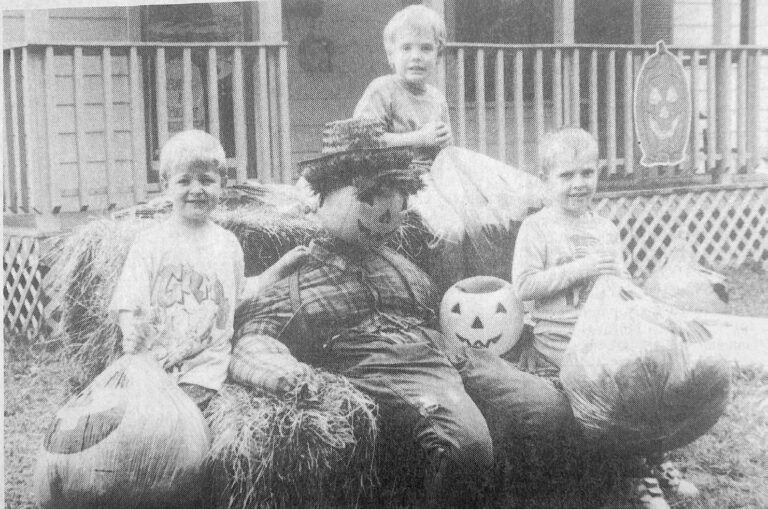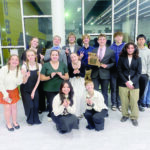50 years ago
Oct. 31, 1973
— GEOLOGICAL SURVEY OF AREA IN UPDATE PROGRAM
Crews of the U. S. Geological Survey are expected to begin this week updating maps of approximately 660 square miles in this area, according to Sam Mitchell, local sur – veyor and one-time member of the government service. Included are the Cassville and Shell Knob areas. Earl Reynolds, district engineer; J. P. McHugh, pro- ject engineer; Henry Skor- dal, part chief and Kent Wilson, elevation meterman, will be conducting the work. Some areas of Aurora will be included in the mapping. Crews will use aerial photos taken from 12,000 feet in the project.
— ZONING CHANGE FOR BUS BARN GETS REJECTION
The Cassville Zoning and Planning Commission rejected a requested change in classification of a piece of property in the northwest part of town in a public hearing last week. Meeting at the request of the Cassville board of education and Continental Telephone Co., the commission recommended the City Council not grant a change in zoning for two pieces of property. Proposed was a tract the school board planned to purchase from Mr. and Mrs. Eugene P. Clark as a site for new bus barn facilities. The telephone company which adjoins the less than one acre tract, sought a similar change from R-1 residential to I-2 light industrial. The commission recommendation to the council was that the request for change be rejected for the “reason that tracts proposed to be rezoned are not of sufficient size for the industrial development of same to be feasible. And for the reason that said tracts about a residential area. Commission deliberations during the meeting with Superintendent James Ford decided the proposed purpose of the site would not be possible considering required side spaces as required by zoning ordinances. Traffic problems for busses in the area were also dis-cussed. Members of the commission attending the meeting included: Ernest German, chairman; Bill Easley, Mayor Ash, Bill LeCompte and Bob Mitchell.
40 years ago
Oct. 26, 1983
— NEGATIVE REACTION FOR STATE’S PLANS AT PARK
Unveiling of plans for shuffling facilities at Roaring River State Park got a generally negative reaction from concessionaires and legislators Friday. Presented by officials of the State Parks Office in Jefferson City, the program would basically switch locations between the park’s accommodations and store facility and the restaurant. John Karel, parks director, presented the program in. a meeting attended by operators of the two concessions involved, State Senator Emory Melton, State Representative Nolan McNeill and Southern Judge Lige Frost. Also in the session was Ken Apperson, regional maintenance supervisor for the parks and Boyd Holcomb, park superintendent. Principals in the sessions were Mr. and Mrs. Jack Nickols. operators of the accommodations store facilities and Mrs. Carolyn Marrs, restaurant concessionaire. Pending if finances are available through Missouri issue of revenue bonds, the concessions operated by the Nickols and Mrs. Marrs would actually swap locations. Extensive work would be accomplished to renovate the old lodge and make the conversion to a restaurant facility. The present restaurant would be converted to offices, stores and nature center. Estimate to cost in the neighborhood of $1 million, the program was apparently presented in no alternative manner. Possibilities of improvements of the two operations in their present location were explored during the meeting but found little favor. Both McNeill and Melton emphasized after the meeting that proposals of the park department are based on the possibility of the legislature approving issuance of $250 million in revenue bonds during the current special sessions.
— DNR PURCHASES LAND PARCEL
Purchase of a parcel of land near Roaring River State Park recently by the Missouri Department of Natural Resources was financed through a $35,600 grant by the U.S. Department of Interior, National Preservation Service, according to Senator John Danforth. Adjacent to Highway F east of the park, the 58 acres of glade area will be used to retain natural surroundings to the area.
30 years ago
Oct. 20, 1993
— LOCAL VET PUBLISHED
Cassville veterinarian Chip Kammerlohr published an article in the October, 1993, issue of the DVM Newsmagazine. The article addressed immune deficiency in animals and its affect on therapeutic efforts.
— NEW EPA REGULATIONS FORCE CITY TO FIND SLUDGE SOLUTION
The City of Cassville will be tackling the issue of sludge over the next several months in response to new EPA regulations. Sludge in simplified terms is a beneficial biproduct of waste water treatment. Currently, Cassville’s wastewater treatment facility produces 10,000 gallons of wet sludge a day. The city has been allowing the sludge to settle in the bottom of the 17-acre lagoon at the city’s treatment facility. Public Works Supervisor Steve Henderson said this was an approved treatment method up until now. The city has until February 19, 1995, to devise a sludge treatment method that meets federal guidelines. “This is not something we chose to do,” said Mayor Rolland Meador. ‘It’s something we have to do. We’ve been working hard on this project and are ahead of schedule on meeting regulations.” The council has contracted with Bucher, Willis & Ratliff engineers of Kansas City to help them design the most efficient method of handling sludge. The engineers presented a preliminary report to council members at their October 7 meeting. In their report, the engineers provided the council with an overview of seven alternatives for handling sludge. Charli Jo Ledgerwood, assistant to the mayor, said the city is still exploring its options but has pinpointed one alternative, aerobic digestion, as most feasible. This option would entail constructing at least two tanks, which would be used to reduce water in sludge, which is more than 99 percent liquid. After the water content is reduced, the dry sludge would be land applied. Using this alternative, the city would have to enter a construction process to build the necessary tanks and would have to purchase transportation and land application equipment to handle the sludge. Ledgerwood said that the city does not have a land application site yet. According to EPA restrictions, sludge could not be applied to public-contact land such as the city park. The city is looking into the possibility of applying it to land at the municipal airport. The sludge could also be used as fertilizer on farmland.







